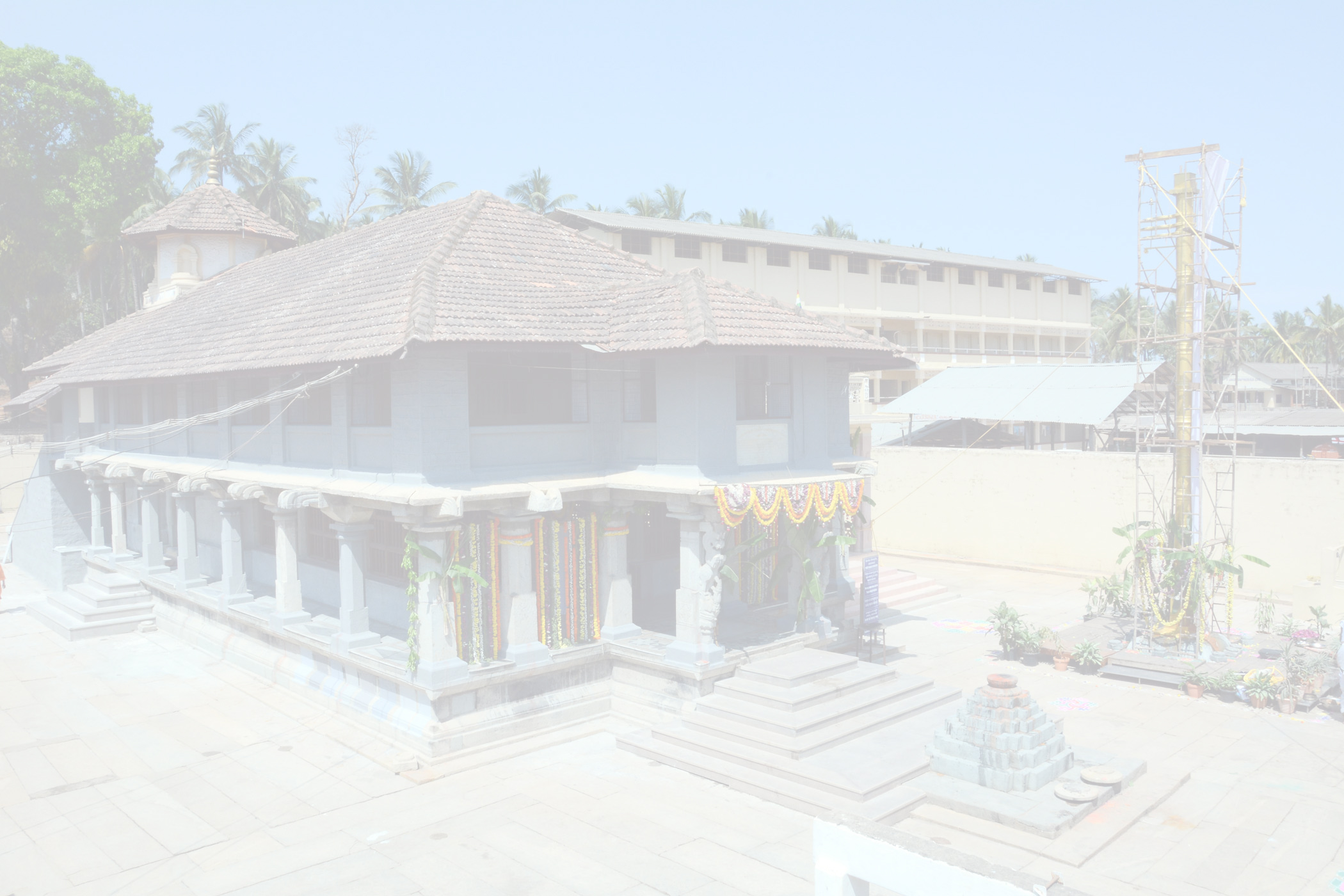There are seen five phases in the Jaina ascetism. These include Brahmacharya, Kshullakha, Ailaka, Digambara and Aryika. These ascetics were traveling continuously from one place to another. Hence they did not require math, the residential place to stay permanently in a single place. In the later days a sect of ascetics called Bhattaraka (or Bhattarakha) Swami evolved to take cognisance of Shravaakas to lead them through right path. This distinct sect of ascetics were assigned with the duty of taking Shravakas in the path of dharma. It is found mainly among the Bispanthi sub-sect of Digambars. Bhattarakas are regarded as religious teachers by the Bispanthis. The terms Batara, Balara, Battora and Bhattaraka used in various occasions imply as the most honoured, revered teacher or seer. It also implies the symbol of merit of scholarship and erudition. Bhattaraka has given rise to another term Pattacharya signifying the head of the Mutt. The term Panditacharya is equivalent or alternative to Bhattaraka. The inscription of Rona dated A.D. 1111 has mentioned the study of the religion and tradition as Battavrutthi. These words are used as a suffix in front of the names of king, guru and other senior people. Nagaverma II, the renowned Jain poet has also cited the same. These words denote eminence of the kings, where as the symbol knowledge and scholarship of the ascetics. Bhattarakas usually belonged to a particular Sangha/Gana/Gachha. Tirthankaras are also addressed as Bhattarakhas as they have attained kevalagnana.
The tradition of Bhattarakhas has paved the way to combat the challenges posed by the advent of Muslim rule in India. The nudity was the mainstay which the Digambara Jaina ascetics was to face during their regime. The tradition resisted the attack by these people to a considerable extent and saved the religion from destruction.
A specific subsect was identified with Bhattaraka exclusively- Devendrakeerthi of Hombuja – with Bogars, Charukeerthi of Moodabidri with Upadyay and also Charukeerthi of Shravanabelagola with Vaishyas. However Bhattarakhas belong to all Jains irrespective of caste and locality. One can observe the ablation of subcastes and group system among Jains.
Bhattaraka vows the responsibility of propagating adhyatmic life and uplifting society through religion and education. He strives hard for the propagation of dharma, education and guides the people on these lines. Bhattaraka is also entitled and expected to follow Nigrantha sadhu stage at the terminal stage of his life. Bhattaraka leads the life pattern of Rajaguru with all the paraphernalia i.e. royal honours and privileges. He is honoured by all the sects of people in the society. They evince keen interest in the development of art literature, architecture and sculpture and also the performing arts such as music, dance or drama. Bhattaraka is mainly concerned with religious preaching and propagation. However the additional responsibilities of maintaining the holy place was bestowed upon. A radical change was observed in the 12th and 13th century with the advent of foreign rule.
The Bhattarakas are regarded as superior to the common people and inferior to munis. In the earlier years the Bhattarakas assumed nudity. However with the advent of changes in time and space they started wearing clothes. They also possess a water canteen (kamandala) and a tuft of peacock feathers. They used to walk bare feet and move from place to place, but later stayed at a single place. They exercise control over society. It requires greater preparation, devotion and dedication to fulfill the needs of Gurupeetha and the people. They consume food only once a day, stay in a single place during chaturmas and finally assume the state of nigrantha. They observe the rituals strictly and also advise others to follow the same method of living. They are endowed with the responsibility of propagating the religion, construction of new temples, restoration of the old built by shravakas and also to safeguard the offerings to those temples. They also organise pooja celebrations, installation of Jain idols, conducting the rituals of worshipping the Jina and protecting literary works.
They personify sacrifice, learning capacity, literary interest and organisational abilities. The organisation of religious conferences, collecting and publishing religious works, protecting classic works of the religion are the duties rested with them. Bhattarakhas are the religious heads like the kings ruling their domain. This lead to the tradition of observing the throning ceremony of Bhattarakhas as that of the kings. Strictly speaking Bhattarakhas are the transformed personalities from Digambara munis and for which the society was also responsible to some extent. The Bhattarakas are also called as Deva, Muni, Acharya, Bhata, Guru and Pandit.
Hombuja Jain Mutt
Thre Hombuja Jain Mutt has a very ancient history and belongs to the Kundakundanvaya Nandi sangha tradition.
Profile of Sri Deevendrakeerti Bhattaraka Swamiji the present Bhattaraka of Hombuja

